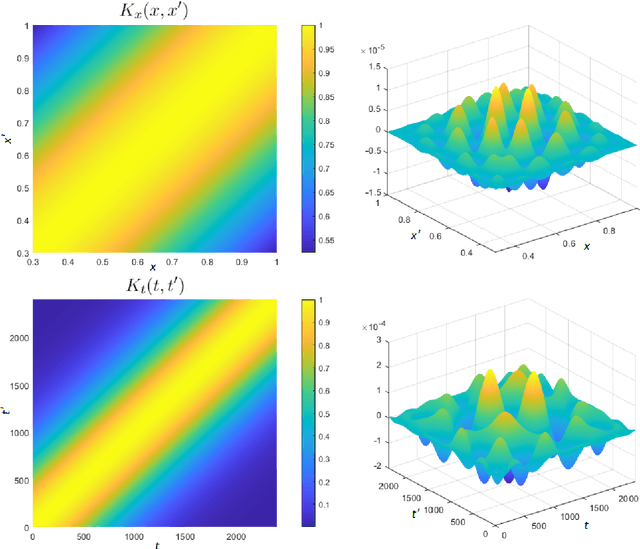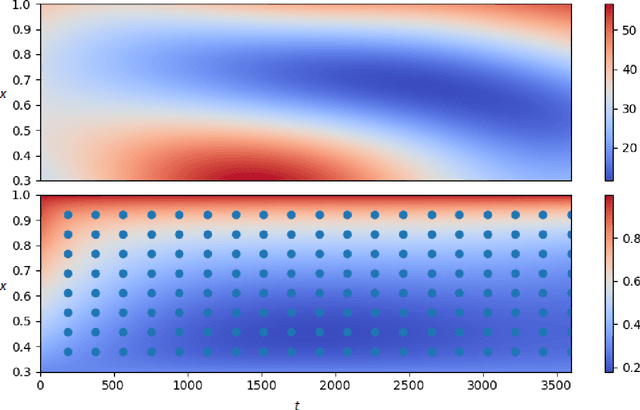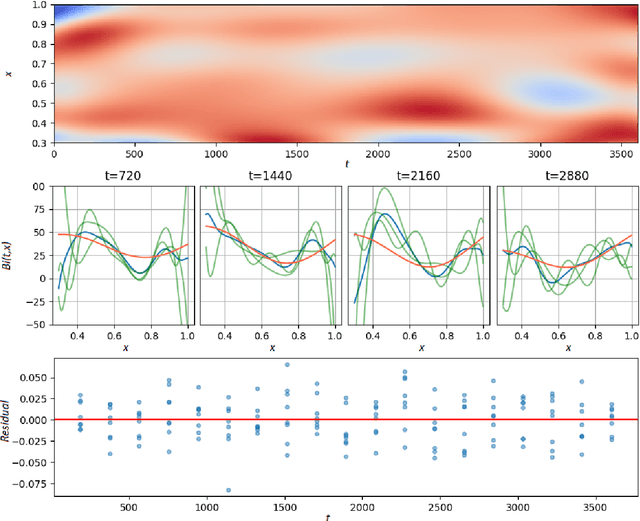Deep surrogate accelerated delayed-acceptance HMC for Bayesian inference of spatio-temporal heat fluxes in rotating disc systems
Paper and Code
Apr 05, 2022



We study the Bayesian inverse problem of inferring the Biot number, a spatio-temporal heat-flux parameter in a PDE model. This is an ill-posed problem where standard optimisation yields unphysical inferences. We introduce a training scheme that uses temperature data to adaptively train a neural-network surrogate to simulate the parametric forward model. This approach approximates forward and inverse solution together, by simultaneously identifying an approximate posterior distribution over the Biot number, and weighting the forward training loss according to this approximation. Utilising random Chebyshev series, we outline how to approximate an arbitrary Gaussian process prior, and using the surrogate we apply Hamiltonian Monte Carlo (HMC) to efficiently sample from the corresponding posterior distribution. We derive convergence of the surrogate posterior to the true posterior distribution in the Hellinger metric as our adaptive loss function approaches zero. Furthermore, we describe how this surrogate-accelerated HMC approach can be combined with a traditional PDE solver in a delayed-acceptance scheme to a-priori control the posterior accuracy, thus overcoming a major limitation of deep learning-based surrogate approaches, which do not achieve guaranteed accuracy a-priori due to their non-convex training. Biot number calculations are involved turbo-machinery design, which is safety critical and highly regulated, therefore it is important that our results have such mathematical guarantees. Our approach achieves fast mixing in high-dimensional parameter spaces, whilst retaining the convergence guarantees of a traditional PDE solver, and without the burden of evaluating this solver for proposals that are likely to be rejected. Numerical results compare the accuracy and efficiency of the adaptive and general training regimes, as well as various Markov chain Monte Carlo proposals strategies.
 Add to Chrome
Add to Chrome Add to Firefox
Add to Firefox Add to Edge
Add to Edge